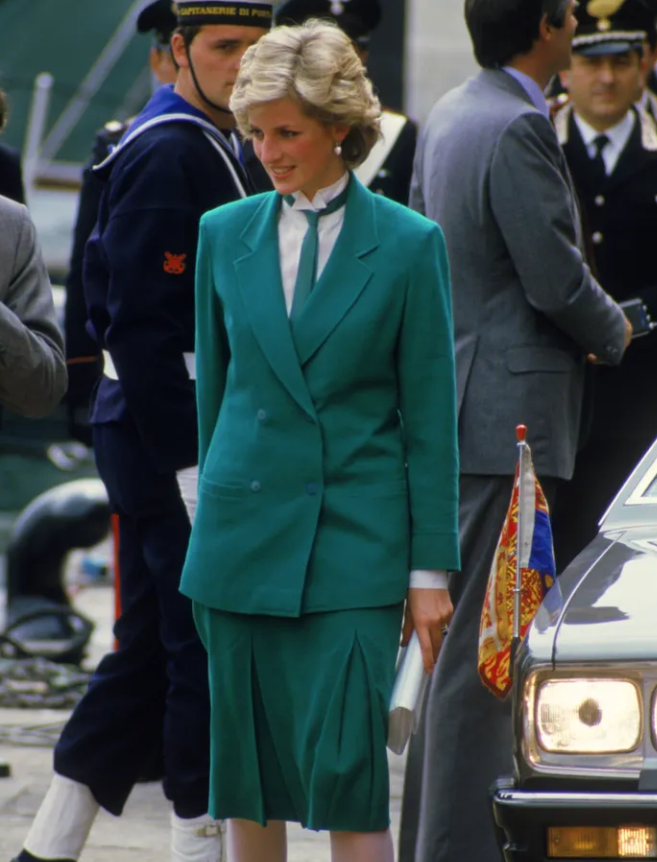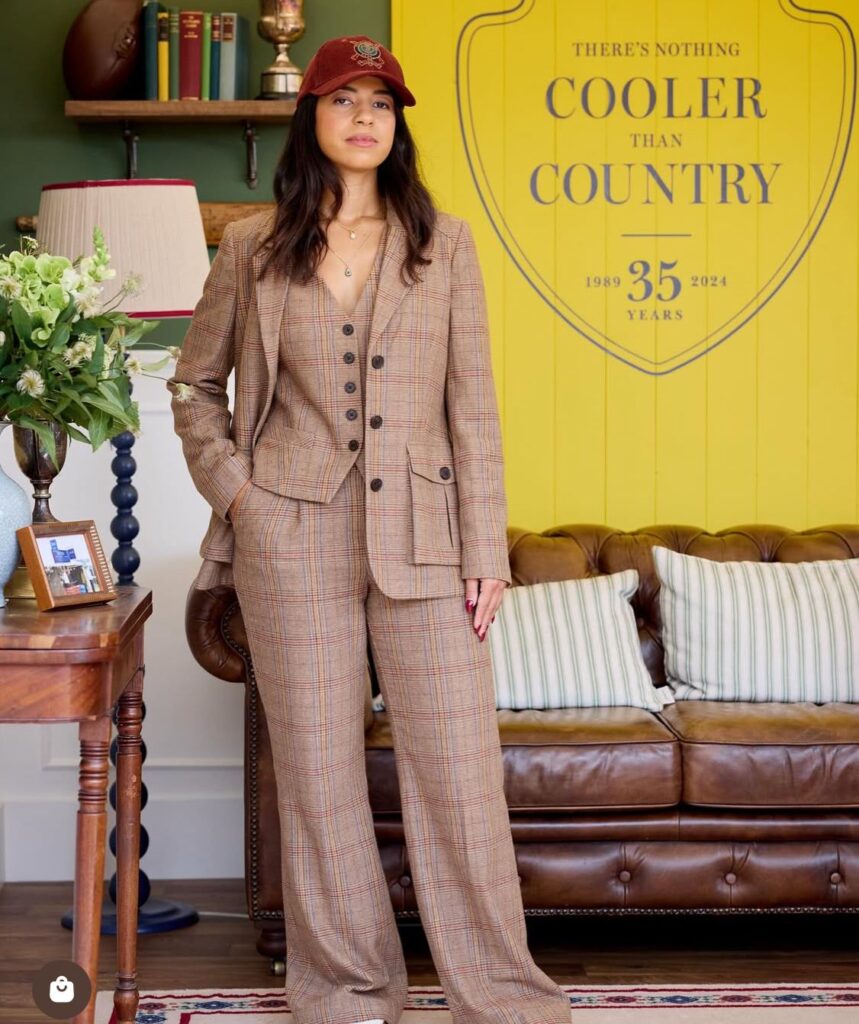The British suit has long symbolised status and authority. From the Victorian gentleman’s suit to the sharp three-piece of the 20th century, it stood as a synonym for masculinity and social rank.
Yet history has rewritten its meaning: in the early 20th century, women stepped into tailored suits to challenge gender norms; in the 1980s, the British ‘power suit’ became armour for women demanding a voice in the workplace.

Photo: Jayne Fincher / Getty Images
Today, the suit tells a different story. No longer confined to male authority, it speaks of individuality, fluidity and rebellion.
“Fashion has always marked the lines of identity – and shown us where they can be crossed,” says Jacki Willson, Associate Professor of Performance and Gender Studies at the University of Leeds.
Yet despite the buzz around genderless style, she warns, society still clings to binaries. “There are moments of resistance on the streets,” she notes, “like women wearing stockings and showing their natural leg hair.”
“But overall, fashion remains dominated by heteronormative ideals.”
British tailoring may be rooted in binary forms, Willson explains, yet its very structure invites subversion.
She cites American designer Thom Browne, whose suits merge masculine and feminine codes into cultural provocations.
Historical icons also shape this narrative. “Marlene Dietrich in a suit remains one of the most powerful images of gender rebellion,” Willson reflects.
“It shows the suit is more than clothing – it’s a statement of power.”

Photo: Public Domain / Free for commercial use
Still, she critiques some takes on neutrality. “Too often, it erases the body and ends up looking overly masculine or even dull. The real power lies in embracing the body, not removing it.”
Her example is striking: “If a woman has visible leg hair but pairs it with delicate high heels, that sends a stronger message than hiding in wide, shapeless clothes.”
Why Britain? For Willson, the answer lies in cultural contrasts. “Britain is deeply traditional in dress on one hand, yet fiercely rebellious on the other. This coexistence of extremes creates space to challenge gender norms.”
Designers like Jonathan Anderson (JW Anderson) embody this duality, introducing frills and softer details into menswear and expanding the language of tailoring.
If Willson frames the suit as cultural paradox, British lifestyle creator Nehir Glean lives it as personal freedom – turning theory into style.
“This shift is thriving both on the streets and online,” Nehir says. “I feel a sense of empowerment in a three-piece suit – as if it carries an attitude.”
Her inspiration? Marlene Dietrich’s iconic Morocco look: tuxedo, top hat, cigarette in hand – breaking rules while keeping her femininity.

In one look, Nehir reimagines classic tailoring with a playful twist: a checked three-piece suit topped with a casual cap – a nod to heritage updated for a gender-fluid era.
For Nehir, this isn’t a passing trend but part of a cycle.
“Decades ago, women claimed office space with the power suit. Today, it’s left the boardroom for the street – and social media accelerates that shift, letting more people see it, try it, own it.”
What makes the suit enduring? Its versatility.
“It’s naturally unisex,” Nehir says. “Pair it with heels or trainers. It doesn’t belong to a gender – it belongs to anyone ready to express themselves.”

Her other look leans into the romance of the British countryside: a tailored tweed jacket styled with crisp white trousers and knee-high boots – blending rural tradition with modern confidence.
Willson concludes that fashion may seem superficial, yet its influence runs deep.
“Clothing is just fabric, but it communicates. When people see new gender expressions on the street, they adjust their perceptions. That ripple effect strengthens social cohesion.”
For Nehir, the message is simpler: liberation stitched in every seam.
“When I wear a suit, it’s not about gender – it’s about confidence, attitude, and owning who I am.”
In Britain today, the suit is less about class, and more about freedom – a quiet statement worn on streets as much as on runways.
